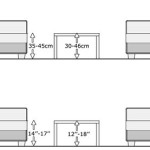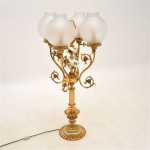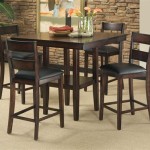Rattan Kitchen Table and Chairs: A Guide to Style and Functionality
Rattan kitchen table and chairs represent a blend of natural aesthetics and practical design, offering a unique seating solution for various kitchen spaces. This type of furniture is characterized by its use of rattan, a naturally renewable palm material, providing a lightweight yet robust option for dining areas. The appeal of rattan extends beyond its visual charm, encompassing durability, sustainability, and adaptability to different interior design styles.
The popularity of rattan kitchen furniture has seen a resurgence in recent years, driven by a growing appreciation for eco-friendly materials and a desire for warmer, more inviting home environments. Its versatility allows it to complement both modern and traditional kitchen settings, adding a touch of relaxed elegance. Understanding the properties of rattan, the various design options available, and the considerations for maintenance and care are crucial for making an informed purchase decision.
Understanding Rattan as a Material
Rattan is a climbing vine that grows in tropical regions, primarily in Southeast Asia. It is a sustainable alternative to traditional timber, as it regenerates quickly and does not require the destruction of entire forests for harvesting. This makes it a favored choice for environmentally conscious consumers. The raw material is processed and shaped to create various furniture components, exhibiting strength and flexibility.
The process of manufacturing rattan furniture involves several stages. Firstly, the rattan canes are harvested and cleaned. They are then steamed to increase their flexibility, allowing them to be bent and shaped into the desired forms. The shaping process is often done by hand, contributing to the unique character of each piece. The joints are typically secured with screws, nails, or glue, depending on the design and construction method. Finally, the furniture is finished with a sealant or varnish to protect it from moisture and wear.
The natural properties of rattan offer several advantages. It is relatively lightweight, making it easy to move and rearrange the furniture. It also possesses a degree of inherent flexibility, which provides a comfortable seating experience. Rattan is also resistant to cracking and splitting, provided it is properly maintained. However, exposure to excessive moisture or direct sunlight can compromise its integrity over time. Therefore, it is essential to consider the placement of rattan kitchen furniture to minimize these risks.
Exploring Styles and Design Options
Rattan kitchen tables and chairs come in a wide array of styles, accommodating diverse aesthetic preferences and space constraints. From rustic and bohemian to contemporary and minimalist, there are design options to suit various kitchen decors. The choice of style often depends on the overall ambiance desired for the kitchen space. A rustic rattan set may feature natural, unpolished finishes and intricate weaving patterns, while a contemporary set may incorporate sleek lines and streamlined designs.
Table shapes also vary, including round, square, rectangular, and oval options. Round tables are ideal for smaller kitchens, fostering a sense of intimacy and conversation. Square tables offer a balanced aesthetic and can accommodate up to four chairs comfortably. Rectangular tables are suited for larger kitchens, providing ample surface area for dining and meal preparation. Oval tables combine the benefits of round and rectangular shapes, offering both space and visual appeal.
Chair designs are equally diverse, ranging from simple backless stools to elaborate armchairs with woven details. The choice of chair design should complement the table style and provide comfortable seating. Some rattan chairs feature cushions for added comfort, while others are designed with ergonomic considerations in mind. The addition of cushions can also introduce color and texture into the kitchen space, enhancing the overall aesthetic.
Beyond standard table and chair sets, rattan can be incorporated into other kitchen furniture pieces, such as bar stools, benches, and even islands. Rattan bar stools offer a stylish seating option for kitchen counters or breakfast bars, while rattan benches can provide versatile seating along walls or under windows. Integrating rattan into the kitchen island can add a natural element to the heart of the kitchen, creating a cohesive and inviting space.
Maintenance and Care for Rattan Kitchen Furniture
Proper maintenance is crucial for preserving the beauty and longevity of rattan kitchen table and chairs. Regular cleaning and protection from environmental factors are essential for preventing damage and ensuring that the furniture remains in good condition for years to come. The frequency of cleaning depends on the level of use and the exposure to dust and spills.
For general cleaning, a soft brush or vacuum cleaner with a brush attachment can be used to remove dust and debris from the rattan surface. A damp cloth can also be used to wipe down the furniture, but it is important to avoid excessive moisture, as this can lead to mildew or warping. Mild soap can be added to the water for more thorough cleaning, but it is essential to rinse the furniture thoroughly and dry it completely afterward.
Protecting rattan furniture from direct sunlight is important to prevent fading and cracking. If the furniture is placed near a window, consider using curtains or blinds to filter the sunlight. The use of UV-protective sprays can also help to prevent fading. Similarly, protecting the furniture from excessive moisture is crucial for preventing mildew and warping. Avoid placing rattan furniture in areas with high humidity or near sources of water, such as sinks or dishwashers.
For spills and stains, it is important to act quickly to prevent them from setting into the rattan fibers. Use a clean cloth to blot the spill, avoiding rubbing, which can spread the stain. For stubborn stains, a mild stain remover or a solution of vinegar and water can be used. Always test the cleaning solution on an inconspicuous area of the furniture first to ensure that it does not damage the finish.
Regular inspections of the furniture are also important for identifying any signs of damage or wear. Check for loose joints, cracks, or splinters. Loose joints can be tightened with screws or glue, while cracks and splinters can be repaired with wood filler or rattan repair kits. Addressing these issues promptly can prevent them from escalating and prolong the life of the furniture.
In addition to general cleaning and maintenance, occasional refinishing may be necessary to restore the furniture's appearance. Refinishing involves sanding down the existing finish and applying a new coat of sealant or varnish. This can help to protect the rattan from moisture and wear and give the furniture a fresh, new look.
When storing rattan furniture, it is important to choose a dry, well-ventilated area. Avoid storing it in damp basements or attics, as this can lead to mildew and warping. Cover the furniture with a breathable cloth to protect it from dust and debris. If storing the furniture for an extended period, consider applying a coat of furniture polish to protect the finish.
Choosing quality rattan construction is paramount for the long-term durability of the furniture. Examine the weaving patterns for tightness and uniformity. Inspect the joints for stability and secure fastening. Opt for furniture with a protective sealant or varnish to enhance its resistance to moisture and wear. Paying attention to these details will ensure that the rattan kitchen table and chairs remain a cherished part of the kitchen for years to come.
Incorporating cushions and upholstery adds another dimension to rattan furniture care. Regularly clean cushions and upholstery to prevent the accumulation of dust, dirt, and spills. Follow the manufacturer’s instructions for cleaning specific fabrics. Consider using fabric protectors to repel stains and moisture. Proper care of cushions and upholstery will contribute to the overall comfort and aesthetic appeal of the rattan kitchen table and chairs.
By understanding the properties of rattan, exploring the diverse design options, and implementing a consistent maintenance routine, homeowners can enjoy the beauty and functionality of rattan kitchen table and chairs for many years. This natural and sustainable furniture choice offers a unique blend of style, comfort, and durability, enhancing the ambiance of any kitchen space.

Sun Rattan Dining Table With Chairs

Twist Rattan Dining Set Of 7

Haven Jules 5 Piece Black Round Shaped Dining Table Set With 4 White Bouclé Fabric Mesh Rattan Backrest Chair Legs Maison Boucle

Rattan Dining Sets 36

4 Seater Rattan Dining Set Garden Cane Wicker Bamboo Furniture Vintage Round Table And Chairs Bistro Etsy

Spice Islands Bar Harbor Dining Table With 48 Glass Top Only By

Alexander Sheridan Serengeti Rattan Indoor 5 Piece Dining Set With Arm Chairs

Borneo Handmade Rattan Dining Set Oval Table With Glass 2 Chairs White Wash Ebay

Dwen Nice 5 Piece Round Dining Set 46 Manufactured Grain And Beige Upholstered Boucle Chair With Rattan Back Oak Metal Legs Maison

7 Piece Wicker Outdoor Dining Set With Rectangular Table And 6 Yellow Rattan Chairs Beige Cushions
See Also








